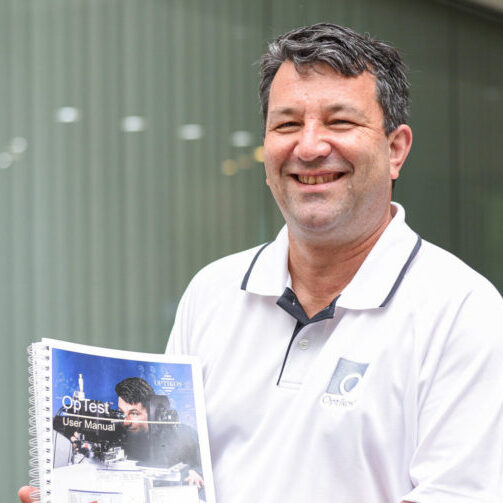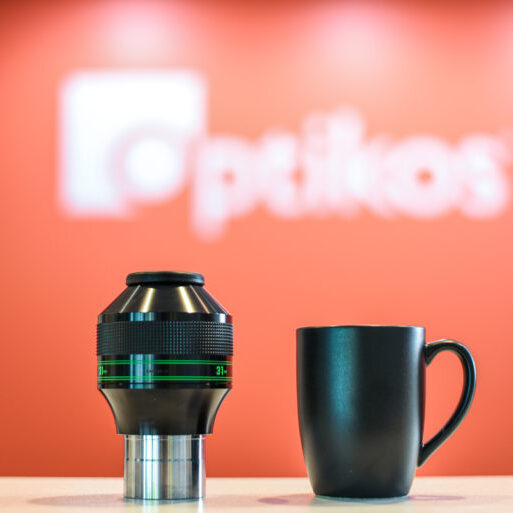Anywhere Light Goes™ Blog
A blog about optical design, build, test and more.
Nearly 40 Years of MTF and Going Strong
Then and now: Roy holding a copy of the original OpTest manual from 2001, featuring his photo on the cover. Let’s take a trip down memory lane. In the mid-1990s when I was a young engineer at Optikos Corporation, I vividly remember CEO Stephen Fantone imploring my boss, Peter Carellas, to get back to work on a project Steve called, “that four-letter word!” The word in question was “book” and the book Peter was working on would become the booklet, published in 1999, “How to Measure MTF and Other Properties of Lenses,” a compilation of articles written by Optikos staff that described techniques for measuring Modulation Transfer Function (MTF) and several other lens characteristics. Even now, more than 20 years...
How Hard Can It Be to Select A Lens for A Camera System?
At first glance selecting a lens for a camera system may seem straightforward, but it can be a deceptively difficult task. We often find that customers have already chosen a sensor and they want to find the most appropriate lens for their application. They will have a field of view requirement and the field of view will determine the appropriate range of effective focal lengths (EFL) for a given sensor. However, once you have an EFL where do you go from there? Unfortunately, there is no straightforward answer. You’ll need to specify an f-number (f/#) for the lens, but keep in mind there is a direct trade-off between the camera depth of field and the image brightness. Are you willing...
Why Measure Stray Light?
Stray light in imaging systems is known by many terms—veiling glare, ghost image, lens flare, and image glare, just to name a few. In its most general sense, “stray light” refers to any unwanted light that ends up in the image formed by a lens. For most of us, our exposure to stray light probably comes from using our cell phone cameras, where the flares and ghost images that appear when taking a picture of a bright light is a cool photo effect at best and a minor annoyance at worst. However, for manufacturers and end users of cameras intended for automotive and industrial applications, being able to consistently identify particular features or specific objects—such as a pedestrian who appears in your...
Virtual Reality Eyepieces – Do Microdisplays Lead to Smaller Headsets?
In virtual reality (VR) systems, we often talk about “immersion” as a primary goal for user experience. From the perspective of the optical designer, an immersive VR headset will produce a field of view (FOV) that rivals a person’s natural field of vision. In practice, we strike a balance between our 200° binocular visual field and a FOV that is feasible with existing display and eyepiece technologies. Most VR headsets produce a full FOV in the range of 80-110 degrees. Even with this compromise, producing an eyepiece that projects this wide FOV is far from trivial. A 90° FOV eyepiece can be as big as a coffee mug—just see the photo below! These refractive lenses comprise 7-10 lens elements and...
An Intimate (and Fun) Conversation with a Nobel Prize Laureate
“Physics laureate Donna Strickland, left, receives the prize from King Carl Gustaf of Sweden during the Nobel Prize award ceremony at the Stockholm Concert Hall, in Stockholm on Monday. (Pontus Lundahl/Pool Photo/The Associated Press)” On May 21st, the New England Section of The Optical Society (NES/OSA) had the good fortune to feature a conversation with Dr. Donna Strickland, who received the Nobel Prize in Physics in 2018 for her work in creating Chirped Pulse Amplification--ultrashort high-intensity lasers that have become essential in laser fusion research, laser eye surgery, and high-density physics research . It had become a tradition that each year Optikos hosts the last NES/OSA meeting of the season at our Wakefield, Mass. headquarters. While this year’s occasion was...
- « Previous
- 1
- …
- 4
- 5
- 6






